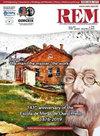地下开挖爆破破坏区范围及性质估算
Q3 Earth and Planetary Sciences
引用次数: 18
摘要
在硬岩隧道和地下开挖中,钻孔和爆破是一种常用的技术。这种开挖方法假定对围岩的破坏程度取决于其质量。本文对如何估计爆破破坏区范围和形状,以及如何量化爆破破坏区岩体性质提出了建议。通过分析爆破破坏区对支护荷载的影响,采用有限元法对考虑和不考虑爆破破坏区的模型进行了比较。结果表明,在爆破损伤区建模的情况下,支撑载荷更大。并将本文提出的爆破损伤区量化方法与爆破损伤因子d量化方法进行了比较,结果表明,两种方法的支护荷载均在同一数量级。也就是说,与爆破损伤因子D法相比,本文提出的方法更加客观,可以在实际爆破前对爆破过程进行描述。本文章由计算机程序翻译,如有差异,请以英文原文为准。
Estimating extent and properties of blast-damaged zone around underground excavations
A common technique in hard rock tunneling, and underground excavation in general, is drilling and blasting. This method of excavation assumes that damage will be done to the surrounding rock mass depending on its quality. Herein is a proposal for how to estimate blast-damaged zone extent and shape, and how to quantify rock mass properties in this zone. Comparison was made, using FEM, between models with and without blast-damaged zone consideration through analyzing its impact on the support load. Results showed greater support loads in the case of blast-damaged zone modeling. Also, comparison was made between the proposed method for blastdamaged zone quantification and quantification using blast damage factor D. Results showed that in both cases, the support loads are in same magnitude order. In other words, compared to the blast damage factor D method, the proposed is more objective and makes it possible to describe the blasting process before it is actually done.
求助全文
通过发布文献求助,成功后即可免费获取论文全文。
去求助
来源期刊

Rem-Revista Escola De Minas
工程技术-工程:土木
自引率
0.00%
发文量
0
审稿时长
6-12 weeks
期刊介绍:
REM – International Engineering Journal (antigua REM – Revista Escola de Minas) es la primera revista técnica de Sudamérica. Fue fundada en enero de 1936 por los estudiantes de la Escuela de Minas de Ouro Preto y desde entonces se ha especializado en la publicación de artículos en las áreas de la Ingeniería Civil, Geología, Metalurgia y Materiales y, Minería y Mecánica y Energía.
Su objetivo es servir como un medio de publicación para los trabajos técnicos y científicos originales de investigadores nacionales y extranjeros en esas áreas. Contribuciones originales (artículos y cartas) son aceptadas. Artículos de revisión dependen de la invitación y/o análisis de los Editores.
El envío de artículos para su publicación implica que el trabajo no ha sido publicado previamente, que no está siendo presentado para su publicación en otra revista y no se publicará en otro lugar, en la misma forma, sin el permiso, por escrito, de los Editores/Autores.
 求助内容:
求助内容: 应助结果提醒方式:
应助结果提醒方式:


